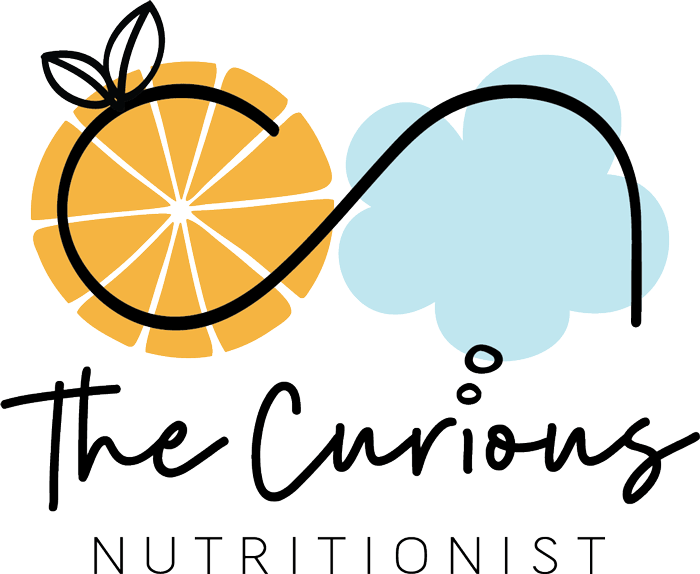“When you eat junk food, you get fat!” and “Is this food healthy?” When working with children, there’s nothing off limits and thoughts are heard out loud. Children think it and say it. These are the kinds of comments and questions I’ve had from primary students in the last twelve months. This seems to be the norm and it’s quite understandable in a culture obsessed with health ideals. Once upon a time, I used to respond to these in a very different way. Now, I know better.
My approach of knowing better does not mean knowing distinct facts to regurgitate, but to understand. To understand means that I’m actively engaged in learning as to what the bigger picture may be here. As a teacher I consider myself a lifelong learner; I’m always curious and I’m always questioning. My education background with a major in psychology and my recent nutrition studies have collided paths and I’m on a mission to help teachers and parents to reconsider the health messages we’re delivering children. This is an incredibly challenging and difficult feat when we have a school curriculum that isn’t aligned with age-appropriate nutrition and food messages for children. I’ll explore in this article the Australian Curriculum (Foundation-6), childhood development, age-appropriate nutrition education and the potential harm it’s doing to our children.
What does the Australian Curriculum say about food and nutrition?
The current Australian Curriculum has identified Health Literacy as one of the key propositions in the Health and Physical Education learning area. Presently, Australia is one of a few nations to employ health literacy as a means to understand and promote health information in the education sector. Broad statements called content descriptions show what students need to learn and elaborations give an example of how the content can be taught. The content of the curriculum comes from a viewpoint that at an early age children will be able to examine and interpret health messages, investigate preventative health and put into practice health promotion strategies. The avenue to teaching these concepts is with a strength-based and inquiry approach. While teachers are highly skilled at delivering units like this, it also needs to be recognised that teachers require quality professional learning in health pedagogy.
How does this recognise child development and age-appropriate nutrition education?
The curriculum elaborations related to food and nutrition suggest that it’s appropriate for students to be analysing their diet, accessing health information, interpreting health messages in the media along with interpreting nutritional information on food labels and in recipes. All of these suggestions are highly problematic due to the stage of children’s cognitive development.
In the primary years, children are considered to be at the concrete operational stage of cognitive development. This basically means that children think logically and apply rules to physical objects. They perceive what’s ‘real’ rather than ideas and rely on their senses to make meaning of the world. Due to this stage of cognitive development children interpret information by considering one factor at a time and will have difficulty connecting ideas. The context of the environment they live in provides a myriad of health information and children have to work hard at filtering it. Thinking is black and white because information is seen as right and wrong or good and bad. The unknown to children also generates fear. For example, the simplicity of messages like, ‘cow’s milk is healthy’, can imply to a child who needs to have an alternate milk (due to allergies or intolerances) to think that other milks are unhealthy or bad.
We need to recognise that children are already active health practitioners and teaching ideals of future health doesn’t necessarily translate to improved health competencies. To children, food is part of their daily routine, rituals or celebrations and something that engages their senses. Food is not understood with abstract dominant adult-like nutrition messages. Children connect to food with their relationship to food rather than what’s considered healthy and unhealthy. Complex health messages like nutrients, (e.g. protein, carbohydrates, Vitamin C, iron etc), serving sizes, how food affects health and chronic disease requires a level of understanding beyond a child’s cognitive ability.
A suggested health activity (work sample) in the curriculum involves children analysing their eating habits based on their daily food intake and comparing it with the Australian Guide to Healthy Eating (AGTHE). This is highly problematic and inappropriate for a number of reasons:
- it invests in an interpretation that a child perceive their diet as ‘healthy’ or ‘unhealthy’
- it engages a black and white narrative of reductive messages – don’t eat…eat less…
- it implies that children are responsible for their choices of food when on most occasions this is the parents’ responsibility
- it doesn’t consider individuals with special dietary needs as the AGTHE doesn’t actually apply to those with medical conditions that require specialised dietary advice
- it over-complicates food and body messages for children and for certain personality types this can lead to a disordered relationship with food
- it adds judgement and stigma to healthy growing children with the connotation that a child needs to ‘be healthier’
- it’s not an evidence-based approach to improving health education outcomes nor one that would be advocated by a health professional like a paediatric dietitian or nutritionist in a clinical setting. We don’t sit down with children and analyse their diets with them! This is highly unethical and shame-inducing!
How can teachers improve their health education practices?
With a curriculum that is less than ideal, teachers do have opportunities to improve their professional practice to deliver effective health education. It’s vital that teachers rely on quality professional learning rather than personal philosophies. Professional practice needs to shift from a paradigm that imposes value-based one-dimensional ideologies with a strength-based approach. A strength-based model focuses on and creates opportunities to support and build upon existing strengths rather than finding solutions to problems and fixing what is wrong. Community-based learning that’s progressive over time through lived experiences provides both students and teachers with opportunities to grow in their learning. Engaging community services to mentor and enact meaningful and rich learning experiences about food in a neutral context to increase food exposure is one example of a strength-based approach. Nutrition education need not be one with encoded messages in the name of health but one that supports eating competence and children’s intuitive nature.
Where to now in promoting a strength-based model in Australian schools?
A strength-based approach to nutrition education is one that values differences, builds on students cultural and social diversity, and is sensitive of child development. Nutrition education like all other learning areas is best approached with rich sensory experiences. Engaging children in real learning experiences like:
- food in their natural context like farms, gardens, homes and the wider environment
- describing food according to colours, textures, flavours, shapes, whether they’re from animals or plants
- learning how food grows, is harvested and transported so we can buy it
- eating shared meals together to reinforce table manners, personal hygiene and social etiquette
- devising recipes, preparing and cooking food
- investigating sustainable food practices.
All of these experiences provide greater exposure to foods and support the feeding experience without a cognitive overload of confusing health messages. Health is a long term lived experience to be nurtured with empathy to help children to learn and grow happily. Let’s start the conversation about positive nutrition education in Australian schools.
References
Health literacy and the Australian Curriculum for Health and Physical Education: a marriage of convenience or a process of empowerment. https://www.tandfonline.com/doi/abs/10.1080/18377122.2013.805480
Structure | The Australian Curriculum. https://www.australiancurriculum.edu.au/f-10-curriculum/structure/
Health and Physical Education | The Australian Curriculum. https://www.australiancurriculum.edu.au/f-10-curriculum/health-and-physical-education/
“Concrete Operational Stage | Simply Psychology.” https://www.simplypsychology.org/concrete-operational.html
“Growth and Development, Ages 6 to 10 Years | NorthShore.” https://www.northshore.org/healthresources/encyclopedia/encyclopedia.aspx?DocumentHwid=te6244
“Making health information meaningful: Children’s health literacy ….” https://www.sciencedirect.com/science/article/pii/S2352827316300349
“Use of Piaget’s theory in preschool nutrition education – Scielo.br.” http://www.scielo.br/scielo.php?script=sci_arttext&pid=S1415-52732009000600012
“Educator Guide – Eat For Health.” https://www.eatforhealth.gov.au/sites/default/files/files/the_guidelines/n55b_eat_for_health_educators_guide.pdf
“Children’s eating attitudes and behaviour: a study of the modelling and ….” https://academic.oup.com/her/article/19/3/261/642259.
“Healthy and unhealthy social norms and food … – Science Direct.” 1 Jun. 2013, https://www.sciencedirect.com/science/article/pii/S0195666313000494
“Strength-based approach – Department of Education and Training ….” http://www.education.vic.gov.au/documents/childhood/professionals/learning/strengthbappr.pdf
“Pedagogy of health education – Unesco.” http://www.unesco.org/education/educprog/ste/projects/health/pedagogy.htm
“Eating Competence – Journal of Nutrition Education and Behavior.” https://www.jneb.org/article/S1499-4046(07)00467-8/fulltext
“Nutrition Education in the Schools – Ellyn Satter Institute.” https://www.ellynsatterinstitute.org/wp-content/uploads/2016/03/Secrets-Appendix-H-School-Nutr-Ed.pdf



Reblogged this on healthyinternationalstudentsite.